-
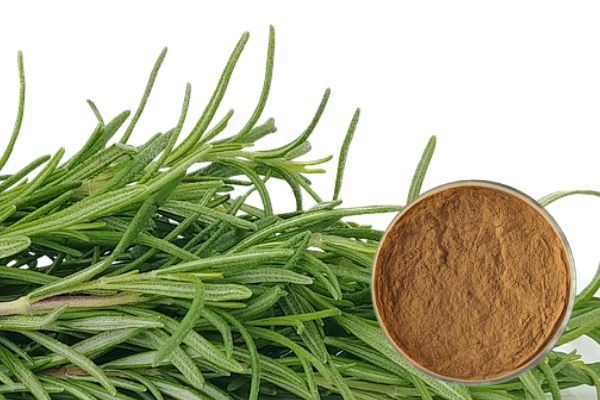
Carnosic acid 10%/20%/60% CAS 3650-09-7 rosemary extract
Carnosic acid is a diterpenoid compound isolated from the leaves of the plant Rosmarinus officinalis, white or yellow-white powder, easily soluble in oil and organic solvents such as ethanol, ethyl acetate, acetone, chloroform, etc., insoluble in water . Carnosic acid is suitable for anti-oxidation of oil-soluble ingredients. Used in sauces, pet food and feed, it has anti-oxidation and anti-aging effects; strong weight loss and lipid-lowering effects; treatment of cardiovascular diseases and anti-cancer effects.
-
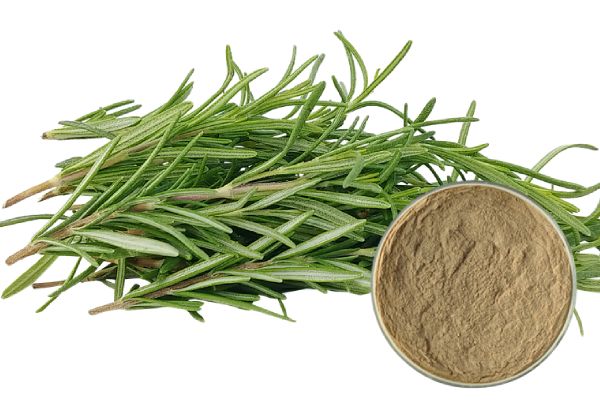
Rosmarinic acid 5%/10%/20% CAS 20283-92-5 rosemary extract
Rosmarinic acid is a natural antioxidant with strong antioxidant activity that helps prevent cell damage caused by free radicals, thus reducing the risk of cancer and arteriosclerosis. Rosmarinic acid has strong anti-inflammatory activity, and rosmarinic acid also has antibacterial, antiviral and antitumor activities. Rosmarinic acid has shown its important application value in the fields of pharmacy, food, cosmetics and so on.
-

Ursolic acid 25%/98% CAS 77-52-1 rosemary extract
Ursolic acid is a triterpenoid compound present in natural plants. It has various biological effects such as sedation, anti-inflammatory, antibacterial, anti-diabetic, anti-ulcer, and lowering blood sugar. Ursolic acid also has obvious antioxidant function. , so it is widely used as raw materials for medicine and cosmetics.
-

Zeaxanthin 10% 20% CAS 144-68-3 Marigold Extract
Zeaxanthin is a new oil soluble natural pigment, which widely exists in green leafy vegetables, flowers, fruits, medlar and yellow corn. In nature, it is often associated with lutein β- Carotene and cryptoxanthin coexist to form a carotenoid mixture. Zeaxanthin is widely used in food additives, and in the food industry, it is often used in coloring meat products.
-

Lutein Ester 10%20% CAS 547-17-1 Marigold Extract
Lutein ester is an important carotenoid fatty acid ester with dark reddish brown fine particles. Most lutein esters existing in nature can be divided into trans lutein esters and CIS lutein esters, which are basically all trans molecular configurations. All trans lutein esters can be divided into: lutein monoester and lutein diester. It is widely found in plants such as marigold, pumpkin, cabbage, and fermented grains. Among them, Wanshou chrysanthemum is the most abundant, as high as 30% to 40%.
-

Lutein 5% 10% 20% CAS 127-40-2 Marigold Extract
Lutein is a natural pigment extracted from marigold marigold. It is a carotenoid without vitamin A activity. It is widely used, and its main performance lies in its coloring and antioxidant properties. It has the characteristics of bright color, oxidation resistance, strong stability, non-toxic, high safety, and can delay the visual deterioration and blindness caused by macular degeneration in the elderly, as well as cardiovascular sclerosis, coronary heart disease, tumor and other diseases caused by aging.
-

Marigold Extract Lutein Lutein ester Zeaxanthin
Marigold extract is the main raw material for extracting lutein and carotenoids. Marigold extracts mainly include lutein and zeaxanthin. Lutein, also known as “plant lutein”, exists together with zeaxanthin in nature. Lutein and zeaxanthin are the main components of plant pigments such as corn, vegetables, fruits and flowers, and also the main pigments in the macular region of the human retina.
-
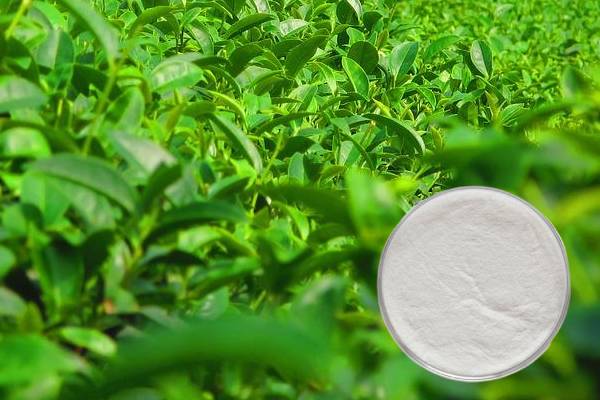
Epigallocatechin gallate EGCG 50-98% CAS 989-51-5 Green Tea Extract
EGCG, namely epigallocatechin gallate, with the molecular formula c22h18o11, is the main component of green tea polyphenols and the catechin monomer isolated from tea. EGCG has very strong antioxidant activity, which is at least 100 times that of vitamin C and 25 times that of vitamin E. it can protect cells and DNA from damage. This damage is believed to be related to cancer, heart disease and other major diseases, These effects of EGCG are attributed to their ability to scavenge (antioxidant) oxygen free radicals.
-

Resveratrol CAS 501-36-0 Polygonum cuspidatum extract antioxidant cosmetic raw materials
Resveratrol is a non flavonoid polyphenol organic compound, which has the effects of anti-aging, anti-oxidation, scavenging free radicals and so on. Slowing down the pace of aging is the goal we have been trying to pursue. Resveratrol, as an excellent anti-aging cosmetic raw material, has many biological activities and is widely used in the field of cosmetics.
-
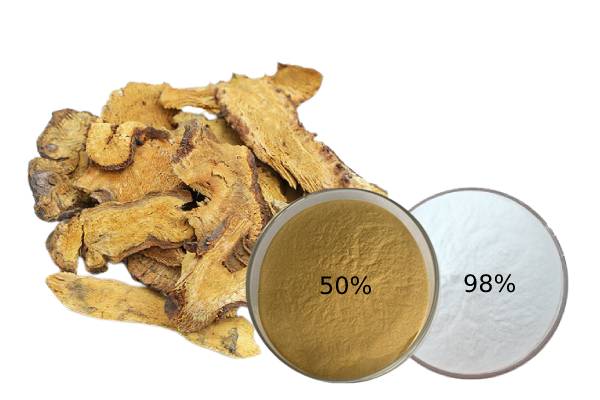
Resveratrol 50%/98%/ water soluble 10% CAS 501-36-0 Polygonum cuspidatum extract
Resveratrol is a natural antioxidant, which can reduce blood viscosity, inhibit platelet coagulation and vasodilation, maintain smooth blood flow, prevent the occurrence and development of cancer, and has the preventive and therapeutic effects of anti atherosclerosis, coronary heart disease, ischemic heart disease, and hyperlipidemia.
-

Ceramide 1% 3% CAS104404-17-3 rice bran oil extract natural cosmetic raw materials
Ceramide is a kind of water-soluble lipid material, which is similar to the material structure that constitutes the cuticle of the skin. It can quickly penetrate into the skin and combine with the water in the cuticle to form a network structure to lock in water.
-
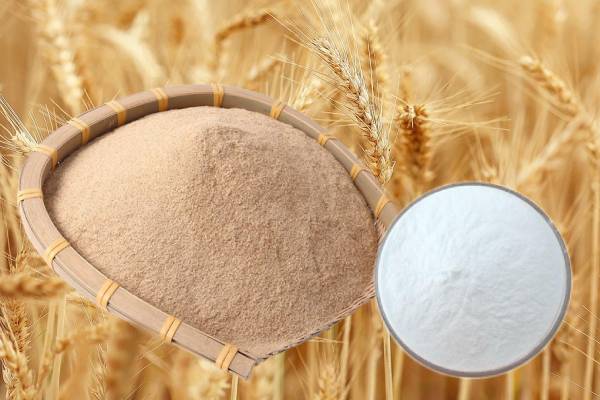
Ferulic acid 98% CAS 1135-24-6 Rice bran extract Natural cosmetic grade raw materials
Ferulic acid is a strong natural antioxidant. Ferulic acid has a variety of biological activities. It can scavenge free radicals and promote the production of free radical scavenging enzymes.
-

Ferulic acid CAS 1135-24-6 Natural ferulic acid 98% Rice bran extract
Ferulic acid is an aromatic acid widely existing in the plant world. Ferulic acid has low toxicity and is easy to be metabolized by human body. It can be used as a food preservative and is widely used in food, medicine and so on.
-

Rice Bran Extract Natural Ferulic Acid Ceramide Cosmetic grade raw materials
Rice bran extract is the seed coat extract of the gramineous plant OryzaSativaL, which contains unsaturated fatty acids, tocopherols, tocotrienols, lipopolysaccharides, edible fiber, squalene γ- Oryzanol and other physiologically active substances. These substances have significant functions in preventing human heart and cerebrovascular diseases, anticancer, enhancing immunity, reducing blood lipids, preventing constipation and obesity, and are important raw materials for health food, medicine, cosmetics and chemical industry.
-

Troxerutin 98% CAS 7085-55-4 Fructuss Sophorae Extract Cosmetic raw materials
Quercetin is a natural flavonoid from plants. It mainly exists in the flower buds (Sophora japonica) and fruits (Sophora japonica). Quercetin has many biological functions, such as anti-oxidation, anti-inflammatory, anti-tumor, anti microbial and so on.
-
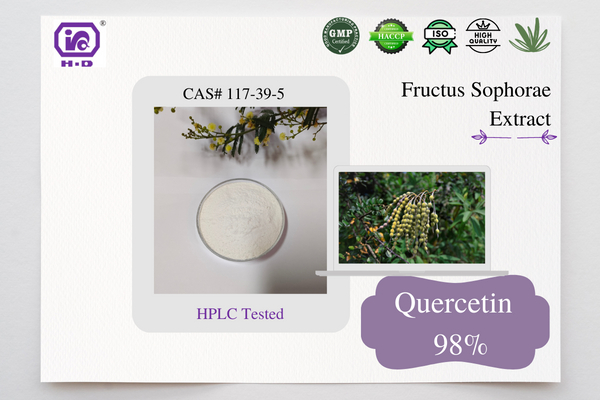
Quercetin 98% CAS 117-39-5 Fructuss Sophorae Extract Cosmetic whitening ingredients
Quercetin is a natural flavonoid from plants. It mainly exists in the flower buds (Sophora japonica) and fruits (Sophora japonica). Quercetin has many biological functions, such as anti-oxidation, anti-inflammatory, anti-tumor, anti microbial and so on.
-

Rutin 95% CAS 153-18-4 Fructuss Sophorae Extract Antioxidant cosmetic raw materials
Rutin, also known as rutin and purple quercetin, is a flavonoid from a wide range of sources. It mainly exists in the flower buds (Sophora japonica) and fruits (Sophora japonica) of the leguminous plant sophorajaponica L. Rutin has anti-inflammatory, anti-oxidation, anti allergic, anti viral and other effects.
-
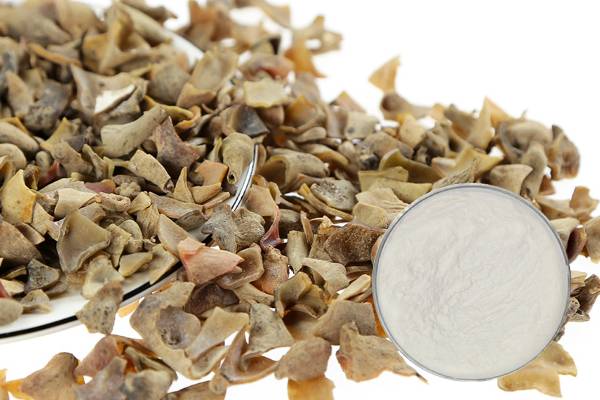
Gallic acid 98% CAS 149-91-7 Galla Chinensis Extract cosmetic raw materials
Gallic acid is a component of hydrolyzable tannin, also known as gallate. Gallic acid has many biological functions, such as antibacterial, anti-inflammatory, anti-tumor, anti mutation and so on. It is widely used in food, biology, medicine, chemical industry and other fields.
-
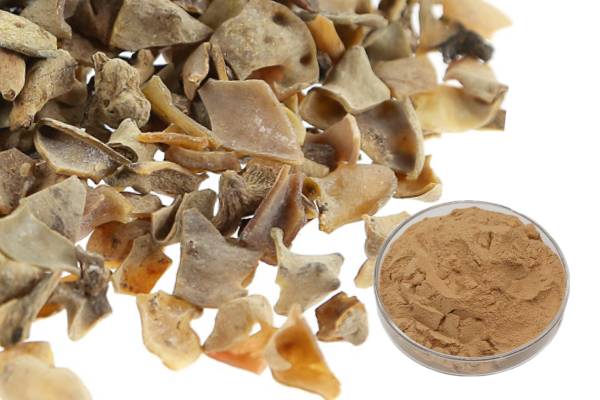
Tannic acid 81%-98% CAS 1401-55-4 Galla Chinensis Extract cosmetic raw materials
Tannic acid is an organic substance with the chemical formula c76h52o46. It is a kind of tannin obtained from galla chinensis. This substance turns blue when encountering ferric chloride and yellow when encountering sulfuric acid. After being absorbed by the human body, this substance can improve the anti-cancer ability of the human body and nourish the skin.
-

Ellagic acid 40%/90%/98% CAS 476-66-4 Galla Chinensis Extract cosmetic raw materials
Ellagic acid has a variety of bioactive functions, such as anti-oxidation, anti-cancer, anti mutation and inhibition of human immunodeficiency virus. In addition, ellagic acid is also an effective coagulant. It has a good inhibitory effect on a variety of bacteria and viruses. It can protect the wound from bacterial invasion, prevent infection and inhibit ulcer. At the same time, it is found that ellagic acid also has antihypertensive and sedative effects.